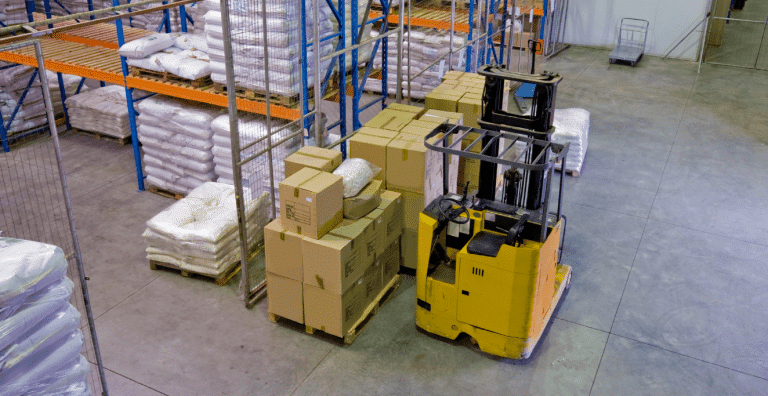
Can a multi-shift operation avoid battery changes? With opportunity and fast charging, the answer is “yes.”
What is fast charging?
Fast charging combines advanced power conversion technology with precise battery monitoring to safely return energy to industrial forklift batteries faster than conventional or opportunity charging. This allows operators to safely recharge their forklifts during regularly scheduled breaks. No time is wasted changing batteries and no extra batteries are needed, even for heavy-duty, multi-shift operations.
Why do companies choose fast charging?
By eliminating the need to change batteries, multi-shift operations can run forklifts all day with only one battery. This eliminates downtime associated with changing batteries and results in higher labor productivity, reduced capital investments, increased availability of floor space, lower total cost of operations and ultimately, cost savings.
How fast is fast?
For industrial forklift batteries, there are three levels of charging:
Is fast charging safe for batteries?
Yes. To maintain battery health, our fast charger is engineered to be part of a “closed loop” system where the battery and charger are in constant communication throughout the charge cycle.
When our fast charge system is installed, a compact monitoring device is attached to the battery. As the charge session progresses, this device records every second of a battery’s operating details, providing the fast charger with critical aspects of the battery’s health.
This allows our fast charger to react to changes in the battery’s temperature and voltage. Should temperatures rise, the charger will respond by automatically adjusting charge rates to maintain an ideal temperature. This improves battery life and makes the system inherently safer.
When does equalization take place?
Fast charging only requires one finish/equalization charge per week.
During normal weekly operations, the fast charger will keep the battery at between 25%-80% state-of-charge. This ensures temperatures remain at safe levels while providing the energy required by the operator.
Our fast charger will sense the need for equalizing and can be programmed to automatically perform the operation when it’s most convenient, such as on a weekend.
Does fast charging impact gassing?
Since gassing only occurs during the finish/equalization charge, the net effect of fast charging is less gassing, less often. For fleets that migrate from 3 batteries per forklift to a single battery, the reduction in on-site emissions is significant.
Minimal gassing also allows fleets more flexibility to park their forklifts anywhere they like, including near break rooms. This minimizes cross-facility foot traffic, reducing the potential for accidents.
What electrical infrastructure is required?
Our fast chargers work with a wide variety of standard AC inputs, including 230, 480 and 600 Volts.
Facilities that change batteries already have the necessary electrical service. And because most manufacturers already run large electronic equipment, most have the right infrastructure.
For facilities that need a service upgrade, the costs of installation can be added to the same lease as the forklifts themselves.
What applications are suitable for fast charging?
Any operation is a candidate, including:
All industries can see performance and cost savings from the technology.
How does fast charging support “lean” objectives?
Fast charging eliminates waste throughout an organization’s value stream:
How does fast charging impact a company’s sustainability goals?
By eliminating the need to over-charge and equalize multiple batteries each day, an operation will reduce the total electricity consumption and number of lead acid batteries on site for a given facility. If the operation is moving from using LP gas to electric trucks, the impact is even larger due to the reduced carbon footprint of electricity versus LP gas.
How does an operation monitor a fleet of batteries and chargers?
Data from each battery monitoring device can be sent automatically to a single locale for analysis. We offer an integrated gateway device to transmit operational data from an entire fleet of chargers, batteries and lift trucks for review in the inCOMMAND software.
inCOMMAND’s graphic reports allow fleet managers to evaluate the performance of every piece of equipment, the behavior of team members and identify the right time to make a maintenance call.
How does a company calculate savings?
Using inCOMMAND, a fast charge specialist works with the fleet manager to create an energy profile for each truck in an operation’s fleet.
The manager selects the preferred charging opportunities, such as 10- or 15-minute breaks, 30-minute lunches and brief shift changes. These small blocks of time are all an operation needs to provide each forklift with enough energy for a day’s operation.
The software automatically selects the right combination of batteries and fast chargers based on each forklift’s unique power and usage needs.
Once the software has selected the battery and charger, it compares the cost of the fast charge system to the manager’s existing solution. It’s common for the battery changing operation to reduce costs by as much as 30% after switching to fast charging.
How does an operation switch from battery changing to fast charging?
The process starts with the Stryten Energy inCOMMAND platform. We use inCOMMAND to create an energy profile for every truck in an operation’s fleet, then show fleet managers graphically how a fast charger and battery will work in their application and how much money they can expect to save.
Stryten Energy will perform a free analysis of your forklift fleet and provide you with the results.
For more information about our line of chargers or inCOMMAND, visit us at www.stryten.com.

Leading the way to renewed and renewable energy.
Copyright 2024 Stryten Energy. All rights reserved.